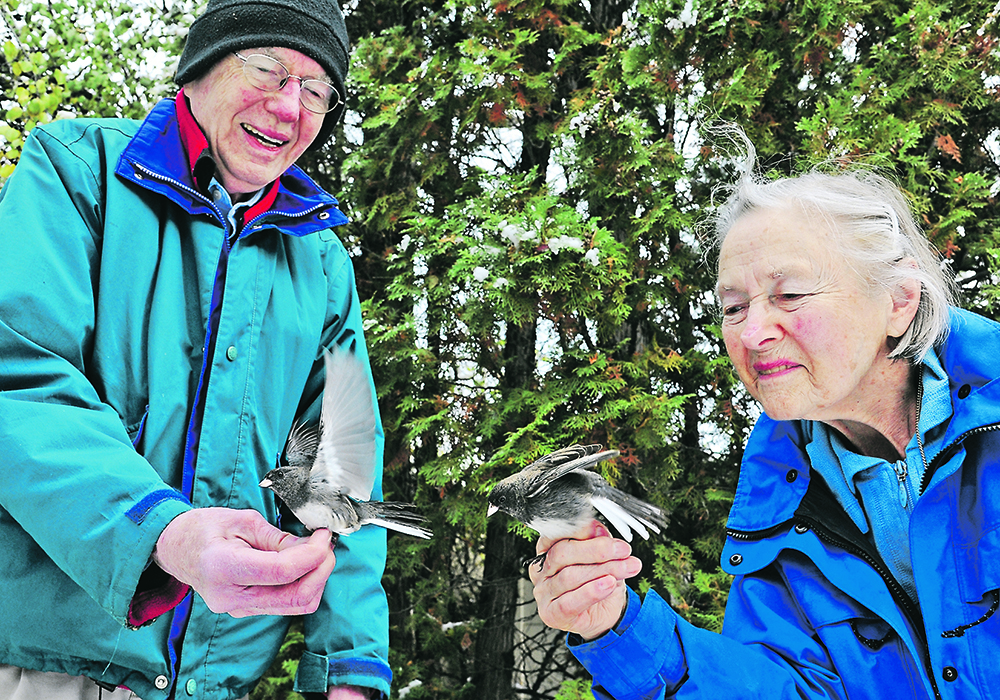Stuart Houston loved to band birds.
With more than seven decades of banding a bevy of feathered friends, Houston always thought retirement was for the birds, as he once said in a media interview.
The medical doctor and long-time bird enthusiast died in July at age 95.
Houston was born in North Dakota where his parents, doctors Sigga and Clarence Houston, practiced briefly before relocating to Yorkton, Sask.
His passion in ornithology began there, fostered by amateur naturalist Isabel Priestly.
While recovering from a broken leg and encouraged by the gift of a typewriter from his parents, the young Houston began writing The Blue Jay, a newsletter for the Yorkton Nature Society.
Read Also

Canadian Food Inspection Agency red tape changes a first step: agriculture
Farm groups say they’re happy to see action on Canada’s federal regulatory red tape, but there’s still a lot of streamlining left to be done
Ducks Unlimited soon hired him to band waterfowl at 10 to 20 cents per bird.
He said in a 2000 interview that banding was not the reward, but rather the scientific information that recovered bands eventually provided. After birds died, their recovered band numbers revealed their age, migration route and nesting ground.
Between 1946 and 2014, Houston banded 150,283 individual birds of 211 species. Some 3,945 bands were recovered from 84 species. It is the highest number recovered from any Canadian bander and the largest list of birds for any North American private bander.
As well, Houston’s permit number is the second lowest number active for the banding program managed by the Canadian Wildlife Service.
Medical practice was his other passion. Houston graduated from the University of Manitoba medical school in 1951 and joined his parents’ general practice in Yorkton.
That same year he married Mary Belcher and for the next 68 years the two were inseparable until her death in 2019.
In 1960, he attended the University of Saskatchewan in Saskatoon for postgraduate training in diagnostic radiology, now commonly called medical imaging. With the exception of one year when he was in Boston studying pediatric radiology, Houston held his U of S faculty position until retiring in 1996.
He served as chair of the department from 1982 to 1987 but once said he particularly enjoyed his term as editor of the Journal of the Canadian Association of Radiologists.
Houston served on the council of the Royal College of Physicians and Surgeons and was the only professor in the College of Medicine to be named honorary president of the Student Medical Society three times.
Houston was no stranger to The Western Producer, to which he provided many columns about birds and nature.
In a story about the flight patterns of Saskatchewan osprey, he was inspired by the detailed information obtained using a solar-powered radio transmitter strapped to the female osprey.
“To find a bird is going 1,000 kilometres a day for two days just boggles the mind,” Houston wrote. “You wouldn’t drive that far.”
Houston cultivated a large network of contacts over the years, mostly farmers who would notify him if they found something of interest, such as an endangered owl nesting on their land.
Age did little to slow down his activities, because many willing enthusiasts flocked to help him out by climbing the more difficult trees or chasing down young pelicans to band.
Houston was an active member of the Saskatoon and provincial natural history societies.
His work in ornithology included four books on Saskatchewan natural history and 311 articles in ornithology and natural history journals, culminating in the definitive book on Birds of Saskatchewan, edited by Houston, Frank Roy and Alan Smith in 2019.
Houston is also a recognized authority on the Franklin expeditions, on the factor-naturalists of the Hudson’s Bay Company and on the medical history of Saskatchewan.
He published several books. Four chronicle the observations of early Canadian explorer naturalists with the Franklin expedition.
He published two other biographies of pioneer Saskatchewan doctors and his volume called Steps on the Road to Medicare describe Saskatchewan’s early achievements in health care.
In large part he was able to do it with the help of his wife, Mary, who helped raise their four children, made a major contribution to the banding efforts and contributed to the research and editing for his publications.
Houston received a variety of awards that encompassed his many passions and activities, including honorary doctorates for literature, the Roland Michener Conservation Award from the Canadian Wildlife Federation, the Saskatchewan Order of Merit and Officer of the Order of Canada.
















